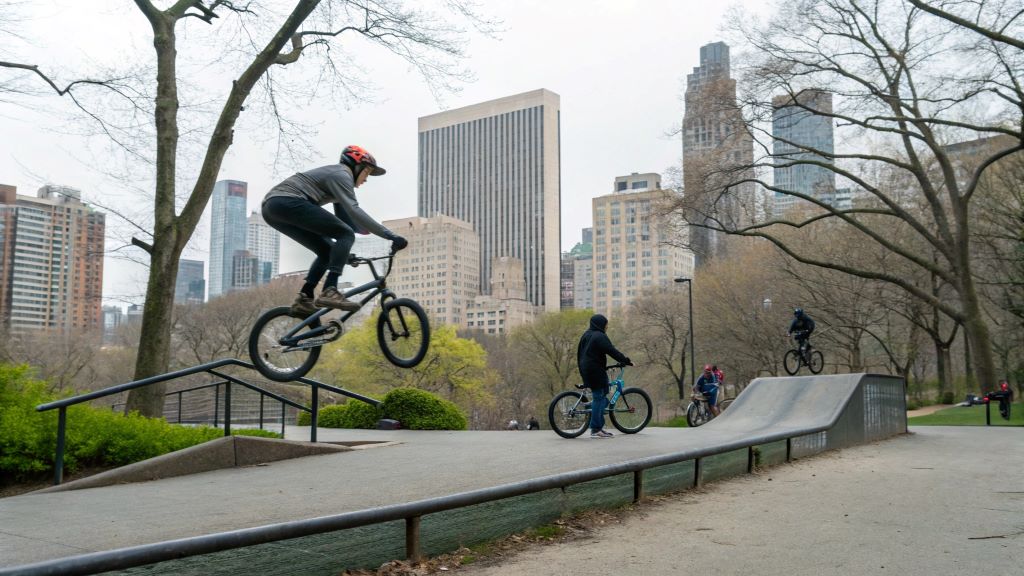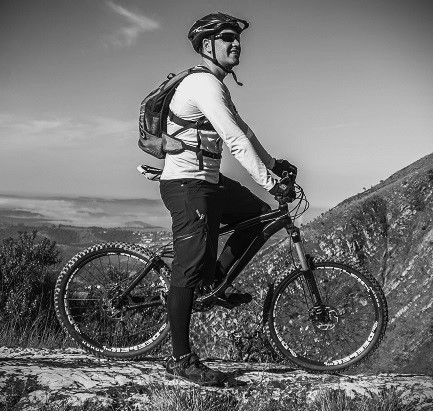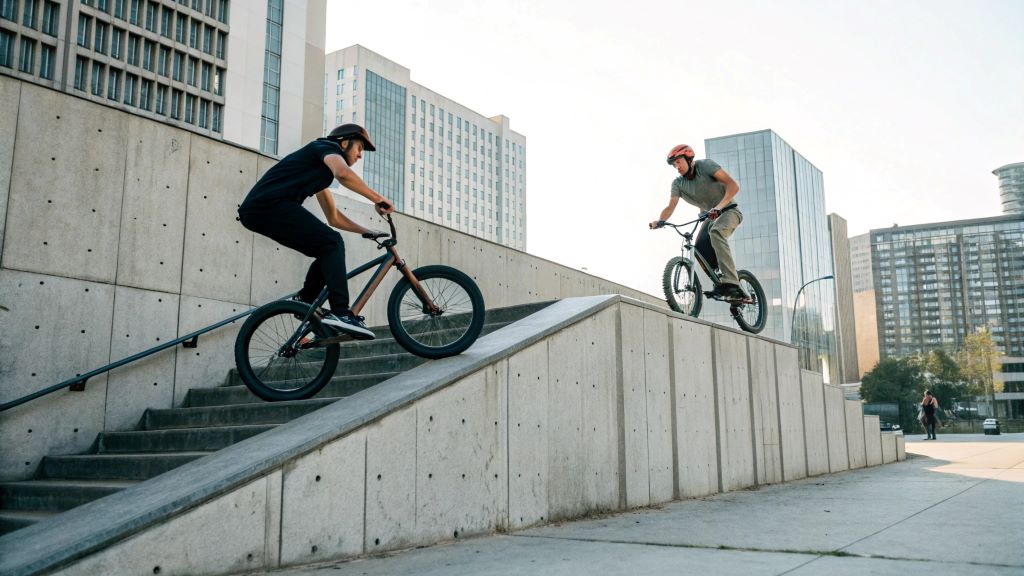Imagine cruising through the city, the wind in your hair, pulling off jaw-dropping tricks on curbs, rails, and ramps. Urban tricks are the heartbeat of street riding, and choosing the right bike—BMX vs MTB Bikes for Urban Tricks —can make or break your experience. Both bikes have die-hard fans, unique strengths, and quirks that shine in urban environments. As someone who’s spent years grinding rails and jumping gaps, I’ve felt the thrill and frustration of both. This guide dives into the BMX vs MTB debate for urban tricks, helping you pick the perfect ride. Ready to roll? Let’s explore what makes each bike tick and why it matters.
Why Urban Tricks Demand the Right Bike
Urban tricks, like tailwhips, grinds, and bunny hops, thrive in cityscapes—think stair sets, ledges, and skateparks. The bike you choose shapes your flow, control, and creativity. BMX bikes, with their compact frames, are built for quick spins and precise landings. MTBs, often with larger wheels, offer stability and versatility across rough terrain. Picking the wrong bike can lead to clunky moves or even crashes. I once tried a 360 spin on an MTB in a skatepark, only to eat dirt because of its heft. According to a 2022 study by BikeRadar, 68% of urban riders prefer BMX for tricks due to its agility. Your bike is your partner—choose wisely.
BMX: The King of Precision and Agility
BMX bikes are the go-to for urban tricksters craving precision. Their small 20-inch wheels and lightweight frames (around 25 pounds) make them nimble for barspins, tailwhips, and fakies. The single-gear setup keeps things simple, letting you focus on tricks, not shifting. BMX shines in skateparks and flatland, where tight spaces demand quick moves. However, their small size can feel unstable on longer rides or rough surfaces like gravel. I remember nailing my first barspin on a BMX—the bike felt like an extension of me. For urban tricks, BMX offers unmatched control, but it’s less forgiving for beginners or those tackling varied terrain.
Benefits of BMX for Urban Tricks
- Lightweight design: Easy to toss around for spins and flips.
- Compact frame: Ideal for tight spaces like stair sets.
- Durable build: Handles crashes and grinds well.
- Simple mechanics: No gears to fuss with during tricks.
- Affordable options: Entry-level models start around $300.
- Trick-focused geometry: Built for spins, jumps, and precision.
Drawbacks of BMX
- Limited versatility: Struggles on long rides or rough terrain.
- Harsh ride: Small wheels feel every bump.
- Steep learning curve: Less stable for new riders.
MTB: The Versatile All-Rounder
Mountain bikes, especially dirt jump or freestyle MTBs, bring versatility to urban tricks. With 26-inch wheels and sturdier frames (30-35 pounds), they handle jumps, drops, and rough landings with ease. MTBs excel when urban tricks involve mixed terrain, like dirt paths or cracked pavement. Their suspension absorbs shocks, making them forgiving for beginners. However, their bulkier build can slow down spins and make barspins trickier. I once took an MTB on a city ride, jumping curbs effortlessly but struggling with quick spins. For riders who want a bike that does it all—tricks, trails, and commutes—MTBs are hard to beat.
Benefits of MTB for Urban Tricks
- Stable ride: Larger wheels handle uneven surfaces well.
- Suspension options: Absorbs shocks from big jumps.
- Versatile use: Great for trails, commuting, and tricks.
- Beginner-friendly: Easier to balance than BMX.
- Customizable setups: Adjust for different riding styles.
- Durable tires: Grip well on varied urban surfaces.
Drawbacks of MTB
- Heavier weight: Harder to maneuver for quick tricks.
- Complex mechanics: Gears and suspension add maintenance.
- Higher cost: Quality freestyle MTBs start at $500.
Key Differences: BMX vs MTB for Urban Tricks
The BMX vs MTB debate hinges on a few core differences. BMX bikes are smaller, lighter, and designed for skatepark-style tricks, making them ideal for spins and grinds. MTBs, with larger wheels and suspension, offer stability for jumps and mixed terrain but sacrifice agility. BMX has a single gear, keeping maintenance low, while MTBs often have multiple gears, adding complexity. A 2023 survey by Pinkbike found 55% of urban riders choose MTBs for their versatility, but BMX dominates in competitive street events. Your choice depends on your style—do you prioritize precision or all-around performance? Test both if you can.
Common Mistakes When Choosing a Bike for Urban Tricks

Picking the wrong bike can derail your urban trick journey. Here are mistakes to avoid:
- Ignoring skill level: Beginners may find BMX too unforgiving.
- Overlooking terrain: BMX struggles on rough surfaces; MTBs shine here.
- Buying cheap bikes: Low-quality bikes break under trick stress.
- Skipping test rides: Feel the bike’s handling before committing.
- Focusing on looks: Flashy designs don’t guarantee performance.
- Neglecting maintenance: Both bikes need regular checks for safety.
- Wrong size bike: Ensure the frame fits your height for control.
Tips for Mastering Urban Tricks
Whether you choose BMX or MTB, these tips will boost your urban trick game:
- Start small: Practice bunny hops before tackling spins.
- Learn bike control: Master balance for smoother tricks.
- Use protective gear: Helmets and pads prevent injuries.
- Study pros: Watch riders for inspiration.
- Practice consistently: Daily sessions build muscle memory.
- Join a community: Local riders share tips and spots.
- Maintain your bike: Check tires, chains, and brakes regularly.
- Film your rides: Review footage to spot mistakes.
Which Bike Suits Your Urban Trick Style?
Your riding style and goals decide the BMX vs MTB question. If you love skatepark sessions, quick spins, and flatland tricks, BMX is your match. Its agility and simplicity let you nail technical moves. If you ride across varied urban terrain—curbs, dirt, and pavement—or want a bike for tricks and commuting, MTB’s stability and versatility win. I lean toward BMX for its raw, trick-focused feel, but my buddy swears by his MTB for big jumps. Consider your budget, skill level, and riding spots. Test rides at a local shop can seal the deal. Ultimately, the best bike feels right under you.
Read More: How to Clean A Bike Chain
FAQs
What’s the main difference between BMX and MTB for urban tricks?
BMX is lighter and better for precise, skatepark-style tricks. MTB is heavier but more versatile for mixed terrain and jumps.
Can I use a BMX for mountain biking?
BMX bikes aren’t built for trails. Their small wheels and lack of suspension make mountain biking tough and unsafe.
Are MTBs good for skatepark tricks?
MTBs can handle skatepark jumps and flowy lines but struggle with quick spins due to their size and weight.
Which bike is better for beginners doing urban tricks?
MTBs are more forgiving for beginners due to their stability and suspension, but BMX suits those ready for a challenge.
How much should I spend on a bike for urban tricks?
Expect to spend $300-$500 for a decent BMX or $500-$800 for a quality freestyle MTB for urban tricks.
Conclusion
The BMX vs MTB for urban tricks debate boils down to your style and streets. BMX delivers precision and agility for skatepark shredders, while MTB offers versatility for riders tackling varied terrain. Both bikes bring unique vibes to urban tricks, and neither is “better”—it’s about what feels right. My BMX days taught me control, but MTBs opened up new possibilities. Test both, start small, and let your skills grow. Which bike calls to you? Drop a comment below or share this post with your crew.
Read More:

Welcome to outdoorxsports.com! I’m Russell, your guide to the awesome world of mountain biking. This blog is all about building a community of riders who love to share their passion for the sport. Expect inspiring stories, local trail recommendations, fun challenges, and tips for making the most of your time on two wheels.

